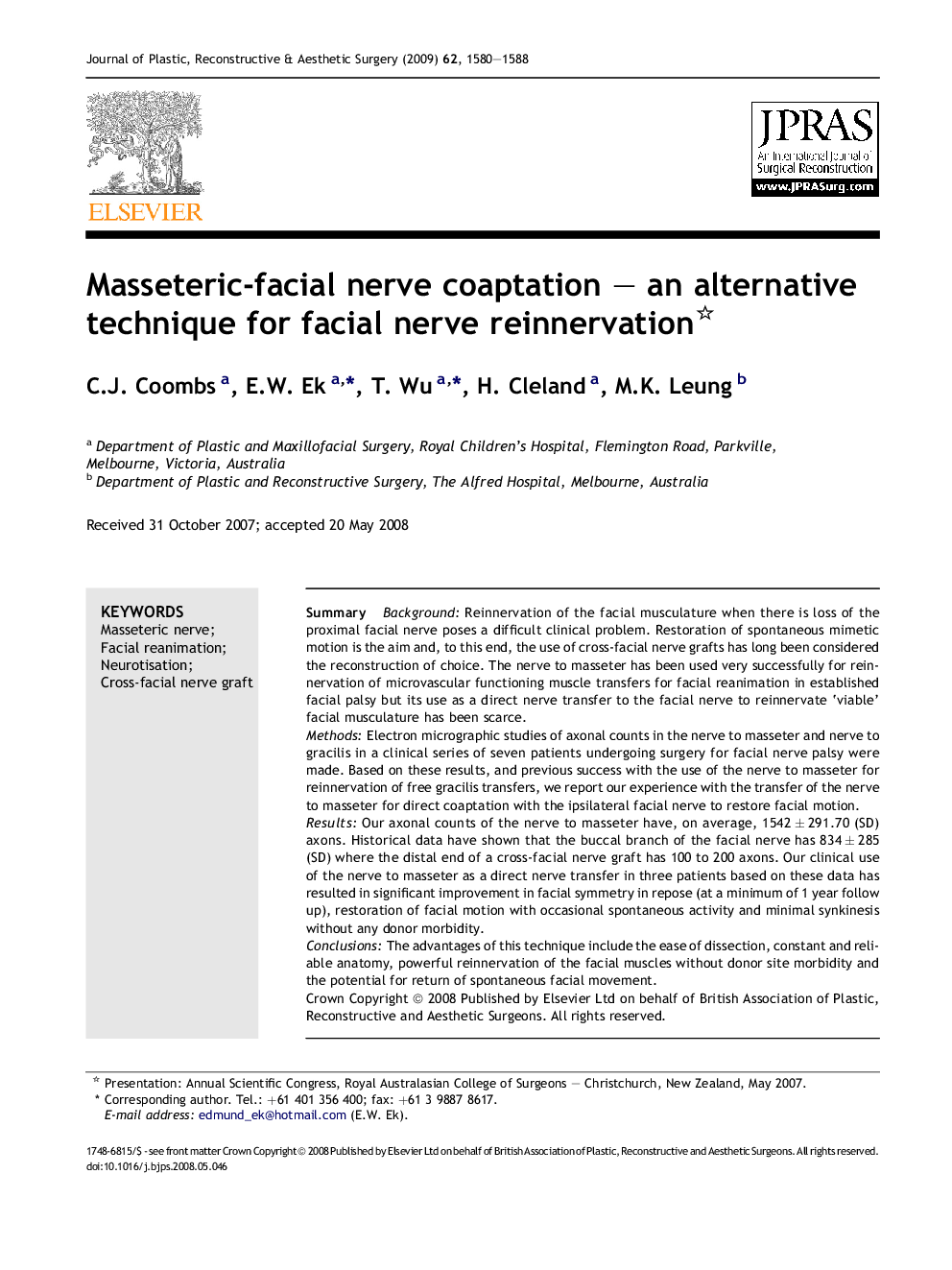| کد مقاله | کد نشریه | سال انتشار | مقاله انگلیسی | نسخه تمام متن |
|---|---|---|---|---|
| 4119981 | 1270365 | 2009 | 9 صفحه PDF | دانلود رایگان |

SummaryBackgroundReinnervation of the facial musculature when there is loss of the proximal facial nerve poses a difficult clinical problem. Restoration of spontaneous mimetic motion is the aim and, to this end, the use of cross-facial nerve grafts has long been considered the reconstruction of choice. The nerve to masseter has been used very successfully for reinnervation of microvascular functioning muscle transfers for facial reanimation in established facial palsy but its use as a direct nerve transfer to the facial nerve to reinnervate ‘viable’ facial musculature has been scarce.MethodsElectron micrographic studies of axonal counts in the nerve to masseter and nerve to gracilis in a clinical series of seven patients undergoing surgery for facial nerve palsy were made. Based on these results, and previous success with the use of the nerve to masseter for reinnervation of free gracilis transfers, we report our experience with the transfer of the nerve to masseter for direct coaptation with the ipsilateral facial nerve to restore facial motion.ResultsOur axonal counts of the nerve to masseter have, on average, 1542 ± 291.70 (SD) axons. Historical data have shown that the buccal branch of the facial nerve has 834 ± 285 (SD) where the distal end of a cross-facial nerve graft has 100 to 200 axons. Our clinical use of the nerve to masseter as a direct nerve transfer in three patients based on these data has resulted in significant improvement in facial symmetry in repose (at a minimum of 1 year follow up), restoration of facial motion with occasional spontaneous activity and minimal synkinesis without any donor morbidity.ConclusionsThe advantages of this technique include the ease of dissection, constant and reliable anatomy, powerful reinnervation of the facial muscles without donor site morbidity and the potential for return of spontaneous facial movement.
Journal: Journal of Plastic, Reconstructive & Aesthetic Surgery - Volume 62, Issue 12, December 2009, Pages 1580–1588